Why Beans are Great
Beans are full of fiber and protein, and they’re cheap. Who doesn’t love a filling pot of soup, or red beans and rice, that can feed 8 people for about $3? Beans are affordable, economical, and easy to dry store for long periods. Beans are also a great source of B vitamins, potassium, folate, magnesium, copper, and zinc. Unfortunately, beans are not easy to digest, and unless prepared properly, all the beneficial protein, vitamins and minerals are not bioavailable. So what are the easiest beans to digest?
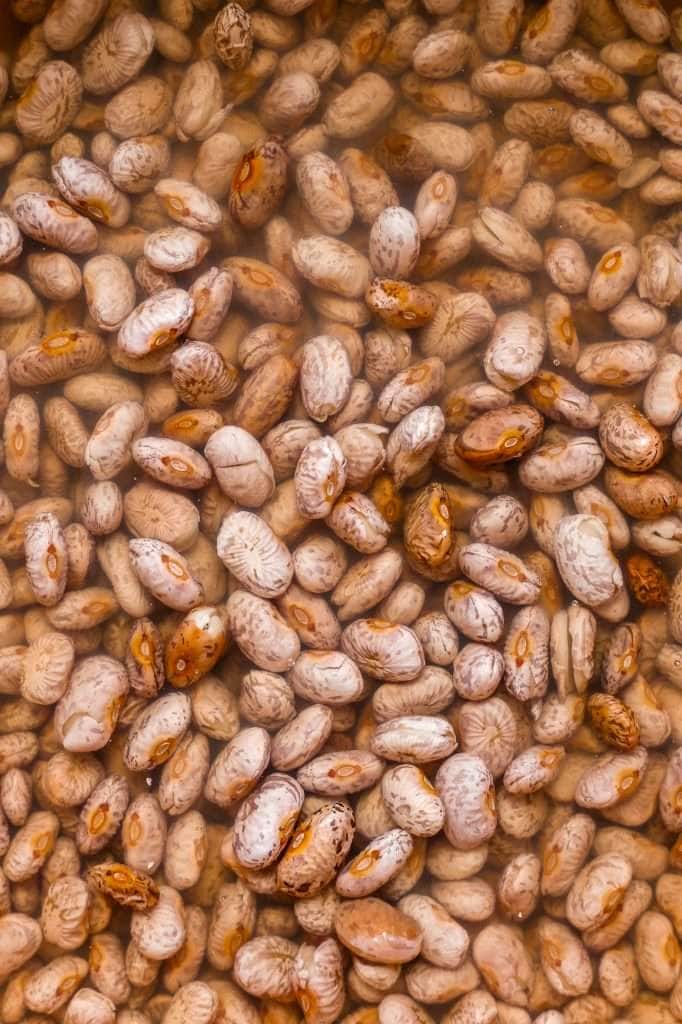
Are Beans Hard to Digest?
The simple answer is yes. As the timeless childhood rhyme indicates, beans are hard to digest. However, with proper preparation, they can transform into an easy-to-digest superfood.
Beans are high in protein and fiber, making them great for gut health. The sugars in beans, though, make them difficult to digest. A lot of people experience gas and cramping after eating beans (beans, beans the magical fruit).
Raw beans also contain anti-nutrients like tannins, lectins, and phytic acid. These compounds make it hard to absorb beneficial nutrients and vitamins from beans. Anti-nutrients can interfere with the absorption of calcium, potassium and zinc.
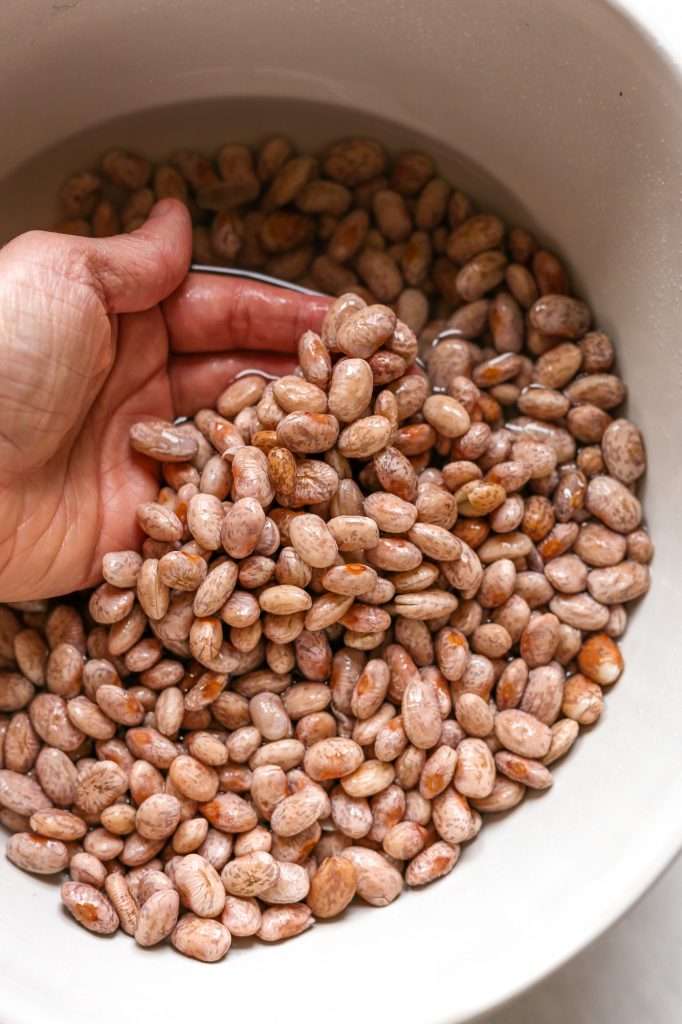
FODMAPs and Beans
Beans contain oligosaccharides and fructans, two sugars also known as FODMAPs. FODMAPs can ferment in the colon and trigger IBS symptoms in many people.
FODMAP stands for fermentable oligosaccharides, disaccharides, monosaccharides and polyols, which are short-chain carbohydrates (sugars). When FODMAPs make it to the large intestine undigested, microbes in the colon can ferment them causing discomfort and lots of gas.
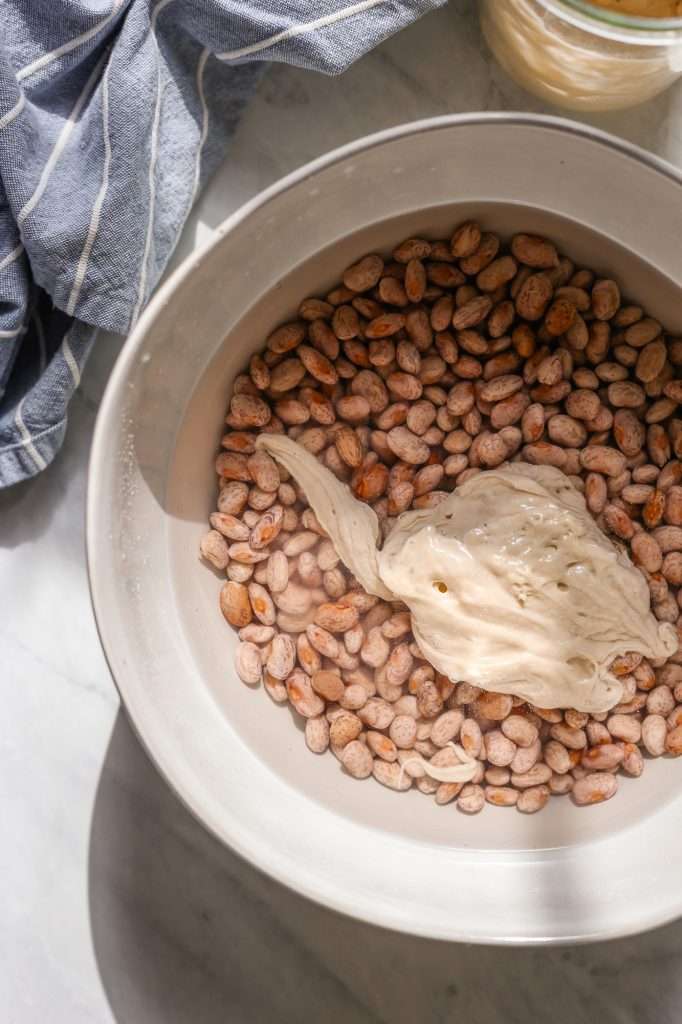
Beans Beans the Magical Fruit
People with IBS are advised to stay away from FODMAPS. Healthy human bodies do produce the enzymes to break apart linkages in oligosaccharides and fructans, but we do not make the enzymes to digest the complex carbs completely… but microbes do.
When beans are soaked with microbes that ferment carbs, the microbes digest the FODMAPS, making it much easier for you to digest.
For instance, the healthy bacteria and yeast in sourdough starters can pre-digest FODMAPs in beans and eliminate anti-nutrients. If we allow microbes to do the fermenting before we eat the beans, significantly less fermenting occurs in our digestive tracts.

What are the Easiest Beans to Digest?
There are five main ways to make beans easier to digest.
- Fermenting into miso and tempeh
- soaking
- soaking with active sourdough starter
- sprouting
- cooking
Now, I added cooking to this list because beans should always be cooked before eating. Cooking eliminates a good bit of anti-nutrients too. I suggest using one of the first three methods and then cooking for the most digestable beans.

The Easiest Beans to Digest are Fermented
I like employing microorganisms and fermentation for the easiest to digest beans with the most bioavailable nutrition. Proteins, vitamins, and minerals in beans become easier to digest and absorb after fermentation.
Two of the healthiest ways to prepare beans is to make tempeh and miso. But, we can also use microorganisms to simply soak and cook beans.
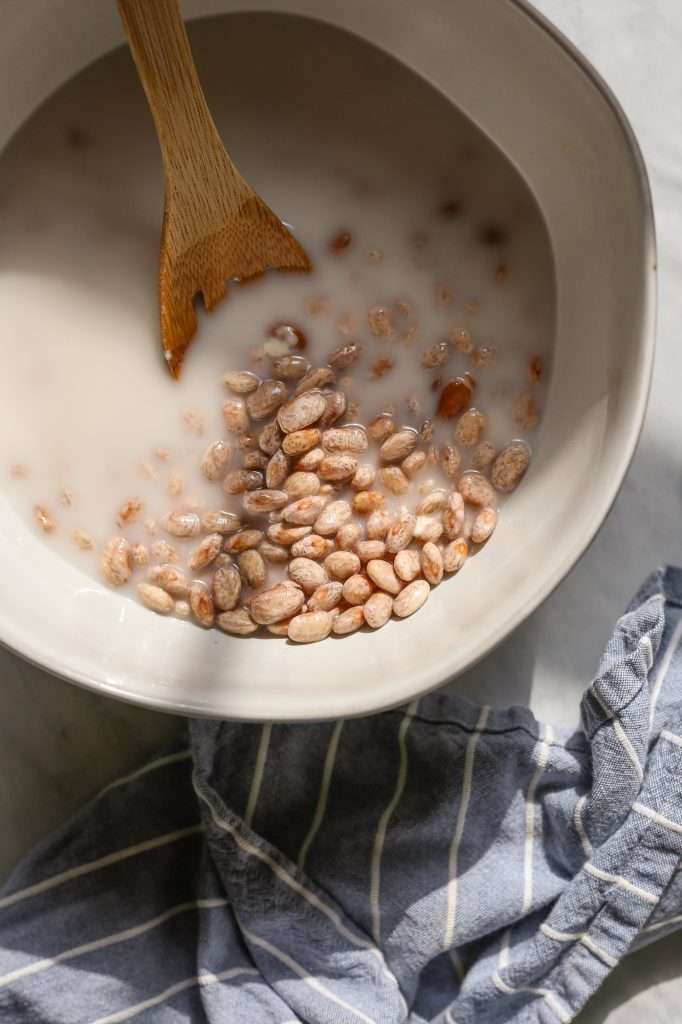
Preparing the Easiest Beans to Digest
It’s easy to prepare beans that are much easier to digest, and also more flavorful. Begin by soaking your beans for a few hours until plump, then rinse. Next, soak the beans for 24 hours in warm water with sourdough starter. You only need a couple of tablespoons of active bubbly sourdough starter.
Also, I want to note that this soaking method works with any beans. So here are my favorite beans to prepare this way:
After soaking rinse the beans well and cook them. You can cook them in a pressure cooker or on the stove. For delicious recipes with beans I suggest the cookbook Cool Beans.
Print
Beans Beans the Magical Fruit: The Easiest Beans to Digest
Beans are a great source of B vitamins, potassium, folate, magnesium, copper, and zinc. But are beans hard to digest? Learn how to prepare the healthiest and easiest beans to digest. Once you try these beans you’ll forget the rhyme “beans beans the magical fruit…”
- Prep: 10 minutes
- Total Time: 10 minutes
Ingredients
- 1 cup beans, dry
- water
- 1/4 cup sourdough starter, active
Instructions
- Rinse the beans, cover them with warm water and soak for about 3 hours until plump.
- Drain and rinse the beans, then cover them with fresh warm water.
- Stir in the sourdough starter, and mix until it is dissolved in the water.
- Soak the beans at room temperature with the starter water mixture for 12-24 hours at room temperature.
- Drain and rinse the beans well.
- Cook as usual or use in specific recipes. (I like to cook the beans in broth in my dutch oven until tender or incorporate them into soups)
- If you enjoy this recipe, leave a review below!
Notes
For delicious recipes with beans I suggest the cookbook Cool Beans.




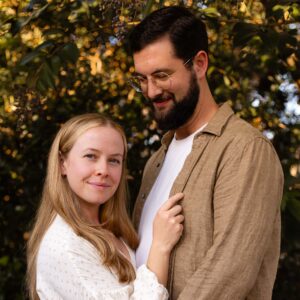
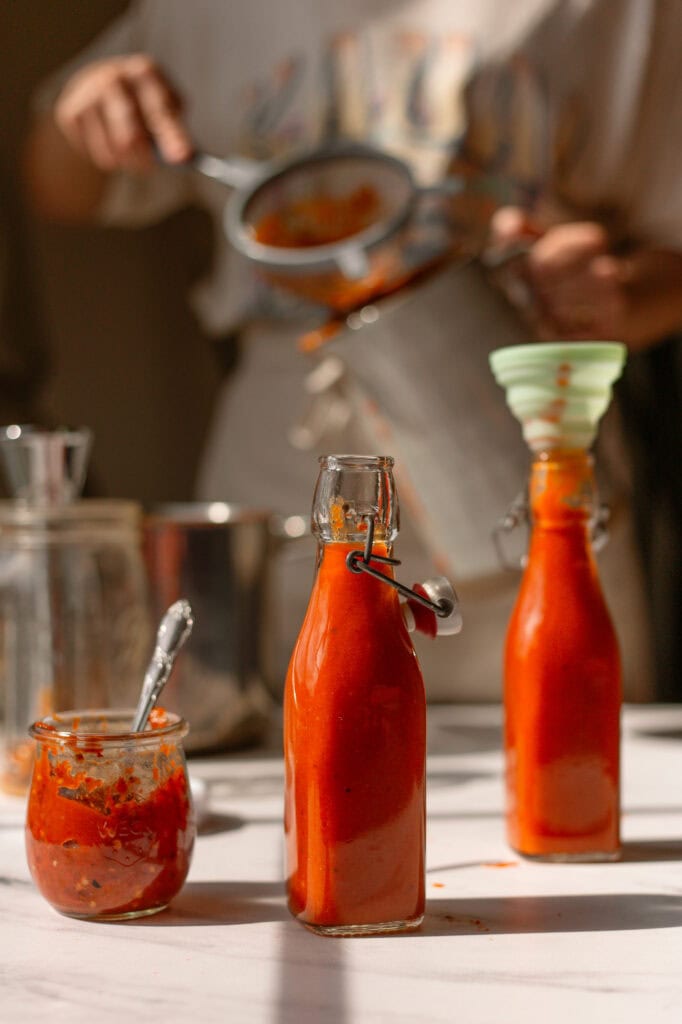
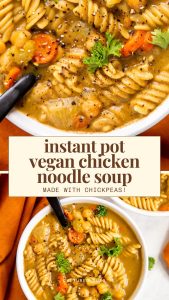


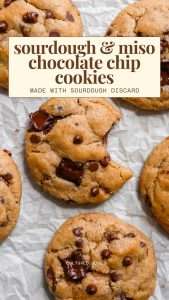










I love that I can find information like this on your blog! Thank you!
you’re welcome!
This is great! I struggle with digesting beans and this helps a ton. Do you have any alternatives to sourdough starter for those who can’t tolerate gluten? Would you be able to use sauerkraut brine or similar? Thank you!
Sauerkraut brine can work, but it’s best to use something that includes fungi, like yeast, too. I’d suggest trying kefir if you don’t have issues with dairy. You can also try using kombucha primary fermentation.
Great method—love that it reduces phytic acid & increases bioavailability of nutrients without sacrificing flavor. After this prep, I followed my old recipe for black beans and rice that I’ve been making for years. They were delicious! Thank you for sharing this ferment technique! So glad you are back!
oh yum! I’m glad you enjoyed it. My black beans that are soaking with a starter right now are destined to become refried black beans paired with cilantro rice. I can’t wait. 🙂
I can’t believe I lived so long without this knowledge. I knew they needed to be fermented but didn’t have the knowledge to do it in a palatable way. I had tried spontaneous fermentation a few times and couldn’t tell if it was rotting or fermenting… So I only soaked instead, continually draining the water, even when I cooked them and they started to become soft, I’d drain the water. Despite my efforts, I suffered. I ate them anyway because I’m reclaiming ancestral foodways to resolve health issues but due to colonization so much knowledge about our foods and even our seeds was purposefully eradicated. Beans are central to our foodways but I felt shame because I couldn’t digest them.
I’ve been doing this method about two weeks now and am finally eating types of beans I had given up on, such as black turtle beans which are my favourite. I have been eating all kinds of legumes the past two weeks using this method: chickpeas, black turtle, white kidney, pinto, red chile, brown lentils. I have not suffered at all!
I love this method. I already make sourdough. A fresh loaf every other day. When I go to divide my sourdough and discard half, I simply put the discard aside, feed it a little, and when it is nice and bubbly, I add it to my soaked beans with fresh water. Once the beans are fermented, I carefully save all the drained fermented bean water and put it in my garden soil :D.
It makes so much sense that cultures with a sourdough tradition also did this method for legumes.
Indigenous peoples in the Americas would’ve likely used fermented corn. I can’t wait to try that method as well. But for now I am so happy with the results and am super grateful to you for revitalizing this practice.
Thank you for this and your whole website! Do you know why we discard the initial soaking water in the first step? And why we can’t use the sourdough soaking water to cook the beans? Just curious and figured you probably know the “why”. Thank you!
I chose to discard the initial soaking water to rinse off some of the anti-nutrients before soaking with a sourdough starter. I like to cook with fresh water so that the flavor isn’t too sour, and so the acidity doesn’t influence the outcome of the recipe I’m using the beans in.
I tried this method, and it was great for my digestive system. I did struggle to get all the starter off my beans while rinsing them off, so there were some unsightly gummy pieces stuck to my beans after cooking.
Any guidance on rinsing off the starter before cooking?
Great, I just started fermenting my morning porridges in a similar way. I was wondering if same can be applied to legumes as I noticed they don’t do well for me if just soaked. I will give it a try with my favourite red lentils. I guess if beans are good to go then all legumes too. Thank you!
Hi😊 this is awesome! Is it necessary to soak the legumes in water prior to addin the sd starter, or can I add it straight away?
Hydrating the beans before adding the starter works best.